How do you properly remove a tick? Once removed, how do you dispose of a tick? There are a lot of theories floating on the Internet.
Listening to people discuss their methods of disposing removed ticks can range from hilarious to frightening. If you’ve heard these discussions, you may begin to ask yourself if others feel about ticks the same way they feel about werewolves or other monsters. Many ideas for disposing of a tick seem both inhuman and punitive to the tick. That’s probably why we never see protestors demanding an end to cruel and unusual punishment against ticks.
Ticks don’t need to be feared. Yes, they will suck your blood. Yes, they can give you a disease, actually several very nasty ones. Scientists believe though that they need to be on your skin drinking your blood between 24-48 hours before your risk of infection becomes significant.
So before you get your flame thrower out or fire up the grill to make a funeral pyre for a tick you find this summer, let’s look at some creative methods of eliminating ticks others have used. On wikiHow.com, there are five methods listed. Readers have added even more. Some of these are comical. You’ll see our recommendation down below but this list was so interesting, we had to share.
Do not remove or dispose of a tick any of these ways!
First, there is fire. You may have heard of using fire to burn a tick on your skin in order to 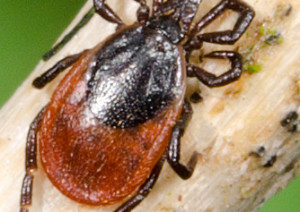 make it release its grip. That’s a bad practice for several reasons, including risk of burning yourself. It’s also a perfect way for the tick to dump its infectious bacteria quickly into your blood before it releases or dies. So, remove first and dispose of second.
make it release its grip. That’s a bad practice for several reasons, including risk of burning yourself. It’s also a perfect way for the tick to dump its infectious bacteria quickly into your blood before it releases or dies. So, remove first and dispose of second.
Next, there is the flush. Once the tick is removed, the suggestion is to wrap it in toilet paper and flush it down the toilet. You may fear the tick won’t go all the way down or that it will crawl back up if it has only been partially flushed down the drain. Although no cases have been reported, you imagine “Tick Terminator” coming back for revenge. This is another not so good idea. It’s not likely your tick will return but you may need the tick for reasons we will explain later.
Third is the microwave. I don’t know about you but the idea of using something I warm my food in as an insect crematorium makes me want to eat cold food all summer long. The website points out there may be issues with putting the tick in a plastic bag and then placing it in a microwave. It mentions tick blood and juices inside the bag may get inside the microwave, if the bag explodes. YUCK!”
The first defense in tick protection is total tick control – call on a Central Mass tick spray professional!
Fourth is alcohol. This may well work but may also will take some time. Ticks can hold their breath a long time so you may want to get a cold drink and rent a movie if this is your method of tick termination. But again, remove the tick first and dispose of second.
Fifth is my favorite. It involves releasing the tick harmlessly. I knew my fellow animal lovers wouldn’t fail me. This is the catch-and-release version of insect control. The recommendation is to release the tick “a long way from your house”. Releasing the tick into say, your neighbor’s yard, will likely mean you won’t see that tick again. Ticks don’t crawl very far and have a limited home territory so you’re probably safe from that one. Unfortunately, the newborn ticks that the released tick makes will probably find their way on your property within a year. By then your neighbor may not be speaking to you and you’ll need to find another drop-off point to practice catch-and-release.
How to remove and dispose of a tick.
So what’s the actual best way to dispose of a tick? First, before terminating it, you need to remove it from the skin properly. Removing it properly will reduce your risk of infection and remove all the infected tick parts. Follow these tick removal instructions!
Once removed, the next step is to seal the tick tightly in a clear plastic bag or an old prescription bottle. Skip the microwave part. Observe yourself for symptoms for at least the next 30 days. It can take many tick disease symptoms, including Lyme Disease, that many days to appear. Keeping any tick you remove from your skin in a sealed plastic bag will allow it to be tested. Testing the tick, is the best way for your doctor to know what tick disease you may have. Even partial ticks missing their head, legs, etc. can be tested for diseases.
Save your matches, microwave and grill for lighting fires and cooking this summer. Ticks don’t need to be tortured for being ticks. More importantly, removing and preserving your tick properly can go a long way to you receiving a correct diagnosis and being treated quickly.
Also read: Do not remove a tick with peppermint oil!

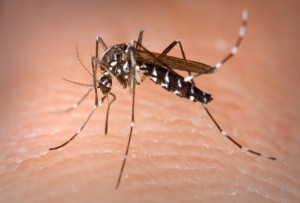
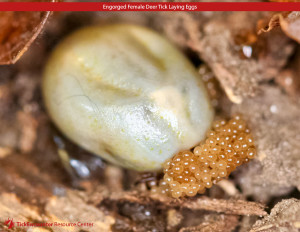

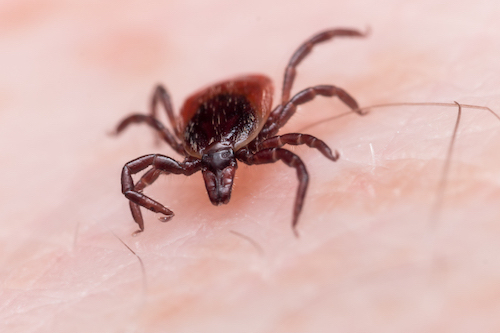
 Where would repair people, mechanics and homeowners be without this 11th Wonder of the Fix-it World? Well, there’s yet another use for it when it comes to ticks. Before ticks become attached to your skin or your dog’s skin, tear off a piece of duct tape and “stick it to them”. Blotting up any ticks on the skin removes the tick and prevents them from becoming lost before you can throw them out. Use a big enough piece of tape to fold it over the tick after removing it and seal them inside. When you’re done, throw the tape in the trash. How easy is that?
Where would repair people, mechanics and homeowners be without this 11th Wonder of the Fix-it World? Well, there’s yet another use for it when it comes to ticks. Before ticks become attached to your skin or your dog’s skin, tear off a piece of duct tape and “stick it to them”. Blotting up any ticks on the skin removes the tick and prevents them from becoming lost before you can throw them out. Use a big enough piece of tape to fold it over the tick after removing it and seal them inside. When you’re done, throw the tape in the trash. How easy is that? It’s OK; this one isn’t as bad as it sounds. Since you have some privacy and your pants and lower garments are off it’s easy to spot any ticks on your skin. Ticks like to hang out for a free meal in grassy and brushy areas. They climb to a height anywhere from our ankles to knees. They dry out quickly in the heat and sun so they try to find shade ASAP. When they find you, that shade is under your clothes and not outside the fabric. Once they get near your skin, they begin looking for places where the skin is thin and where the biggest blood supply can be found. That is usually in the creases and folds of our skin, such as your waist and groin area.
It’s OK; this one isn’t as bad as it sounds. Since you have some privacy and your pants and lower garments are off it’s easy to spot any ticks on your skin. Ticks like to hang out for a free meal in grassy and brushy areas. They climb to a height anywhere from our ankles to knees. They dry out quickly in the heat and sun so they try to find shade ASAP. When they find you, that shade is under your clothes and not outside the fabric. Once they get near your skin, they begin looking for places where the skin is thin and where the biggest blood supply can be found. That is usually in the creases and folds of our skin, such as your waist and groin area.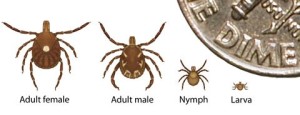
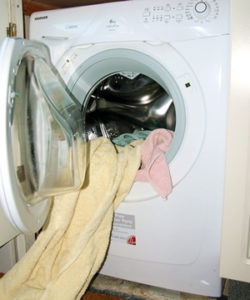 Hard ticks and soft ticks all need moisture, especially hard ticks like deer ticks. Other soft ticks take a bit longer to dry out. So tip #3 is to put the clothes you wore outside in the dryer as soon as you come indoors. Do this before washing them. Ten minutes on high heat will dry out hard ticks and 15+ minutes will dry out the softer ones. Washing won’t destroy ticks, no matter how hot the water. Remember, they need moisture and are active in warm months so warmth and water are their two best friends. Very dry and hot are their worst nightmare. Once your clothes are finished in the dryer, wash them knowing you won’t be releasing any ticks into your closets or clothes hamper.
Hard ticks and soft ticks all need moisture, especially hard ticks like deer ticks. Other soft ticks take a bit longer to dry out. So tip #3 is to put the clothes you wore outside in the dryer as soon as you come indoors. Do this before washing them. Ten minutes on high heat will dry out hard ticks and 15+ minutes will dry out the softer ones. Washing won’t destroy ticks, no matter how hot the water. Remember, they need moisture and are active in warm months so warmth and water are their two best friends. Very dry and hot are their worst nightmare. Once your clothes are finished in the dryer, wash them knowing you won’t be releasing any ticks into your closets or clothes hamper.